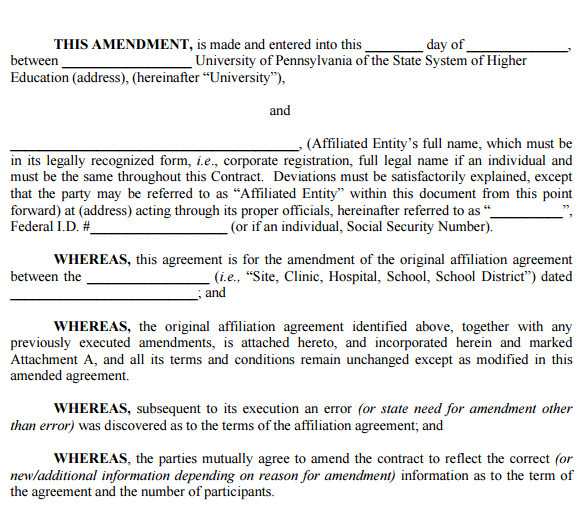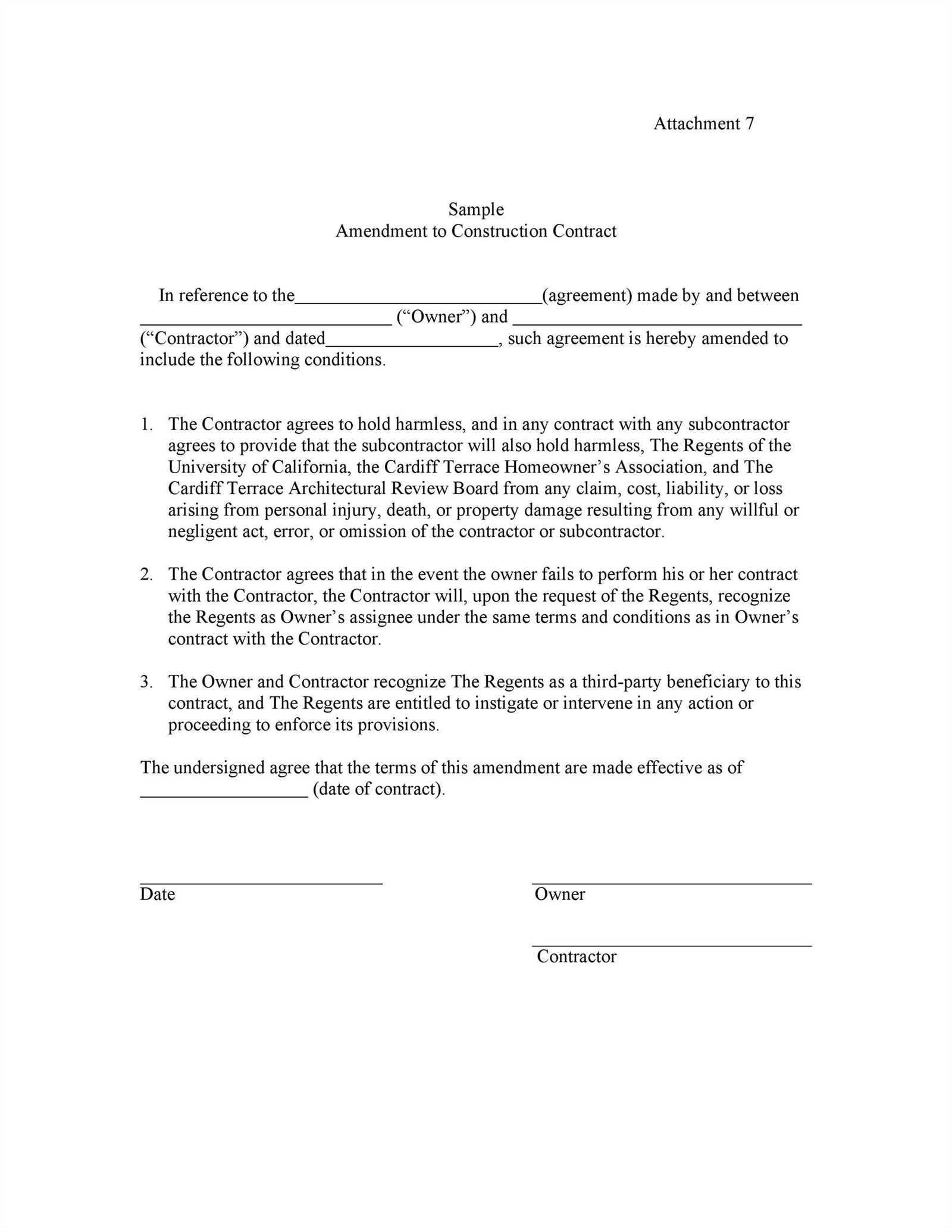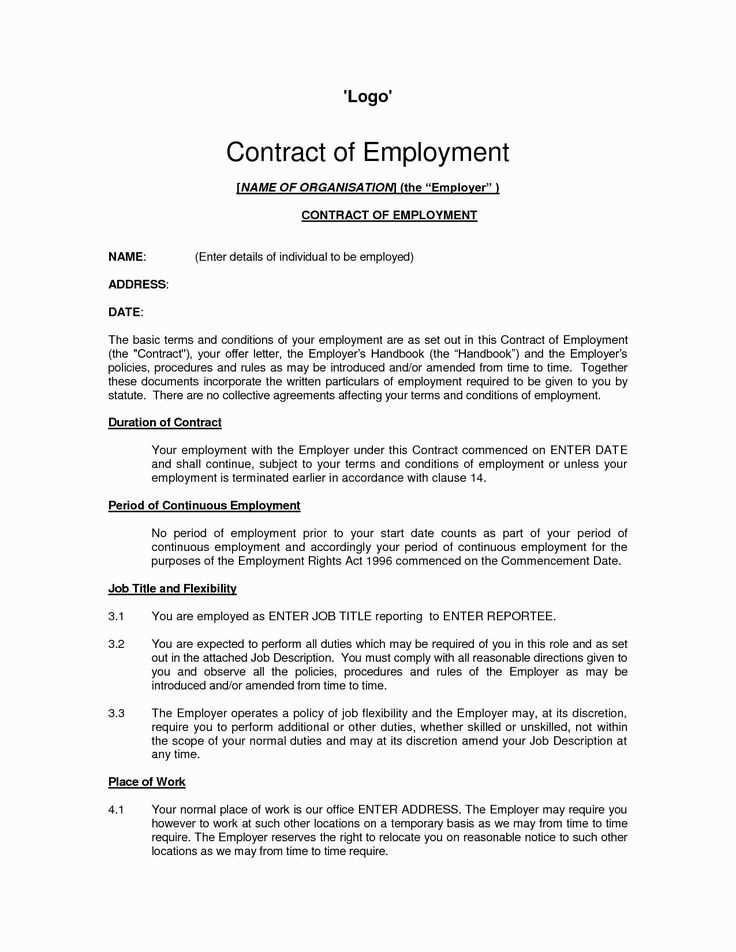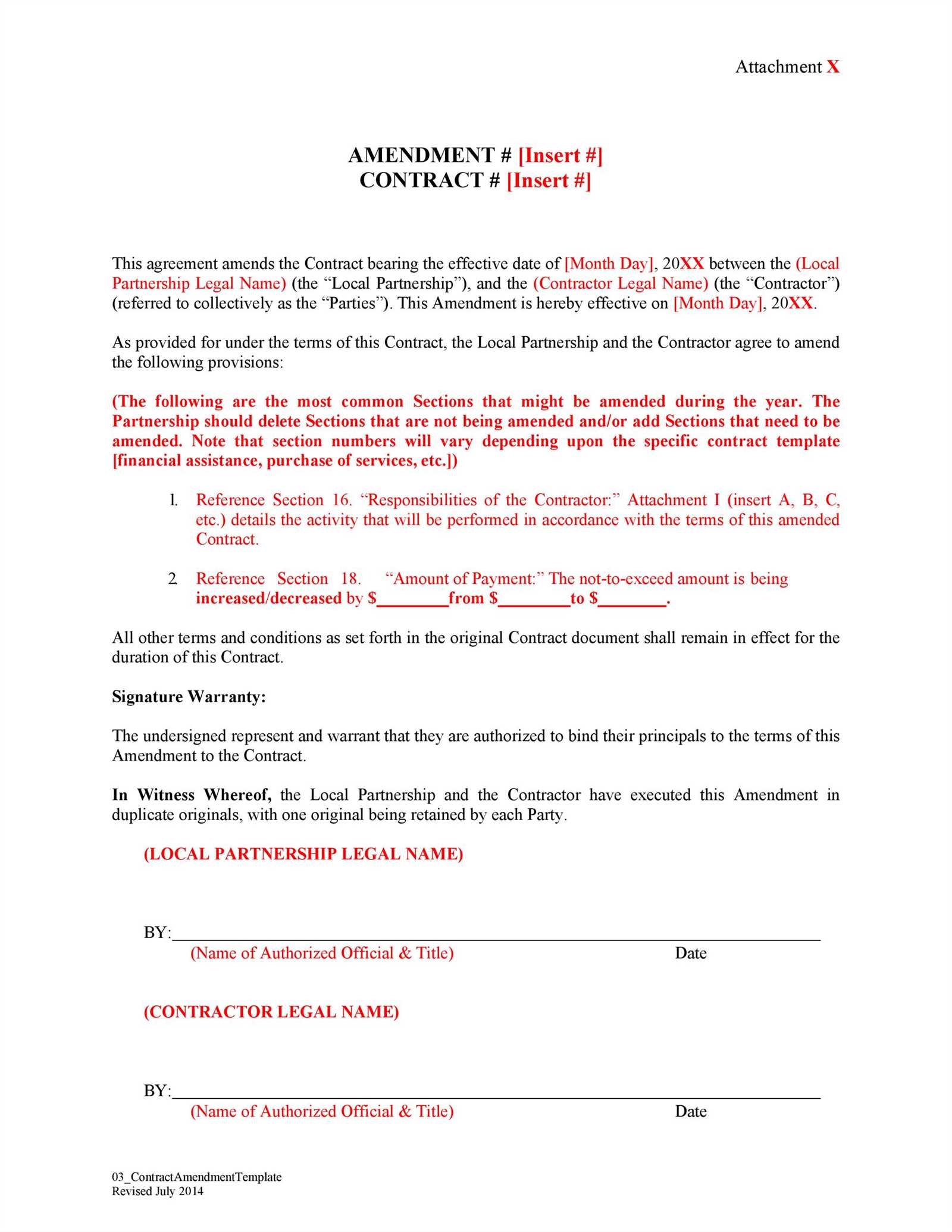Amendment Change of Employment Contract Letter Template

In any professional setting, it may be necessary to update the terms and conditions between an organization and its staff. This often happens to reflect changes in duties, compensation, or work schedules. A formal written notice is essential to ensure clarity and mutual agreement when these updates occur.
Understanding how to effectively communicate these modifications can help prevent misunderstandings. With the right approach, both parties can ensure that the new terms are clear and legally binding. This process typically involves preparing a document that outlines the specific adjustments and securing consent from both sides.
Knowing the proper format and details to include in such communications is key to avoiding confusion. Whether it’s adjusting responsibilities or updating compensation, following a standardized approach can simplify the process and maintain professionalism in the workplace.
Why Amend an Employment Contract
Modifying the terms between a business and its workforce can be necessary for a variety of reasons. As time passes, both the organization and its team members may experience shifts in needs, roles, or external factors that require revisions to existing agreements. Having a formal mechanism to address these adjustments helps maintain clarity and avoid disputes.
Common Reasons for Modifications

- Role changes: A person’s responsibilities or job description might evolve as their skills grow or as the company’s needs change.
- Salary adjustments: Compensation might be updated to reflect new duties or to stay competitive within the industry.
- Work hours: Shifting to a different schedule or changing remote work policies may require formal acknowledgment.
- Regulatory requirements: Legal updates or new industry standards may require changes to internal agreements.
Benefits of Clear Documentation
Having a formal record of these updates ensures both parties are on the same page and that there are no misunderstandings. Proper documentation provides a reference point if future issues arise, making it easier to resolve any conflicts that may occur later. Additionally, it helps both the employer and the employee understand their rights and obligations in the revised terms.
Key Elements of Employment Contract Changes
When updating the terms of an existing work agreement, it is important to ensure that all relevant details are included to make the modifications clear and legally binding. Each adjustment should be documented in a way that both parties fully understand the new arrangements. Below are the essential components that should be addressed in such revisions.
| Element | Description |
|---|---|
| Scope of Changes | Clearly outline what is being modified, whether it involves duties, compensation, or working hours. |
| Effective Date | Specify the date when the updated terms will take effect, ensuring clarity on the timeline for the revisions. |
| Mutual Agreement | Both parties should confirm their understanding and agreement to the revised terms in writing. |
| Signatures | The updated document should be signed by both parties to validate the modifications. |
| Additional Clauses | Include any other necessary clauses that could arise from the new terms, such as confidentiality or non-compete agreements. |
Steps to Draft an Amendment Letter
Creating a formal document to reflect updated terms in a working relationship requires a clear structure. The process should be precise to ensure both parties are aligned and that the modifications are legally recognized. Below are the key steps to follow when drafting such a document.
1. Begin with the basic information: Start by clearly identifying both parties involved, including the full names of the employer and employee. Include their respective addresses and any relevant identifiers, such as employee ID or department.
2. State the purpose: Clearly mention the reason for drafting the document and what specific changes or updates are being proposed. This helps both parties understand the intent behind the modification.
3. Outline the modified terms: Clearly detail the specific terms that are being altered. Whether it’s a change in duties, salary, or work schedule, make sure the updated terms are easily distinguishable from the original agreement.
4. Set an effective date: Specify the date when the new terms will take effect. This ensures that there is no confusion regarding the timeline for the changes.
5. Provide space for acknowledgment: Include a section for both parties to sign, confirming their agreement to the revised terms. This may also include a witness signature if necessary.
6. Finalize and distribute: Once the document has been signed, ensure that both parties receive a copy for their records. Keep a copy filed securely for future reference if required.
Common Mistakes in Employment Amendments
When adjusting the terms of a work agreement, it’s easy to overlook important details or make errors that could lead to confusion or legal complications. Understanding the common pitfalls that occur during this process can help both employers and employees avoid costly mistakes and ensure the new terms are clearly communicated and enforceable.
1. Failing to clearly outline the modifications: Vague descriptions of the updates can lead to misunderstandings between the parties involved. It’s essential to specify exactly what is being modified, whether it’s the role, compensation, or working conditions.
2. Ignoring the effective date: Not including a specific date when the revised terms will take effect can cause confusion regarding when the new conditions begin. Without a clear timeline, there may be disputes about the applicable terms.
3. Not obtaining mutual agreement: It’s vital that both parties explicitly agree to the updated terms. One-sided changes may lead to legal disputes if one party claims they were not fully informed or did not consent to the modifications.
4. Failing to sign the document: The absence of signatures from both parties or relevant witnesses renders the document legally ineffective. Ensure that all involved individuals sign and date the document to confirm their acknowledgment and approval.
5. Overlooking the legal implications: Sometimes, modifications may inadvertently violate local laws or regulations. It’s important to ensure that all updates comply with relevant labor laws and are in line with industry standards.
Legal Considerations for Contract Changes

When revising the terms of an agreement between an organization and its staff, it is crucial to understand the legal implications of such modifications. Both parties need to be aware of the relevant laws and regulations that govern these updates to ensure that the changes are valid and enforceable. Failing to consider these legal aspects can lead to disputes or complications down the road.
Compliance with Labor Laws
Ensure all updates comply with local and national labor regulations. Laws vary by jurisdiction, and certain modifications may require specific procedures or documentation to be legally valid. Be sure to consult with legal professionals to avoid any violations of labor standards or employee rights.
Clarity and Consent

It is essential that both parties fully understand and consent to the changes. Any ambiguity or lack of agreement can render the modifications unenforceable. Clear and unambiguous language should be used, and both parties should sign to acknowledge their understanding and consent to the new terms.
Failure to take legal considerations into account can lead to unnecessary legal battles, costing time and resources for both the employer and the employee. Always ensure compliance and mutual agreement before proceeding with any modifications.
When to Use an Amendment Letter
It is essential to know when a formal document is necessary to reflect updates in a working arrangement. Certain situations may require a written record to ensure both parties are on the same page regarding the revised terms. Understanding the right moment to draft this kind of communication can help prevent misunderstandings and legal issues.
When there are significant role adjustments: If an employee’s responsibilities or duties are being altered substantially, a formal written record ensures that the updated expectations are clear to both sides.
When salary or benefits are modified: Changes to compensation, bonuses, or benefits packages should be documented to avoid confusion and protect both the employer and employee legally.
When the working schedule is revised: Any changes to working hours, remote work policies, or shift patterns should be clearly outlined in writing to avoid disputes about availability and job requirements.
It’s important to remember that such a document serves as a safeguard for both parties, ensuring that the updated conditions are agreed upon and officially recorded for future reference.